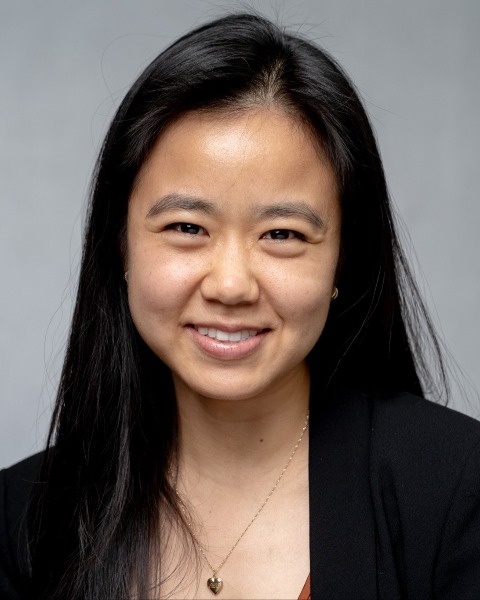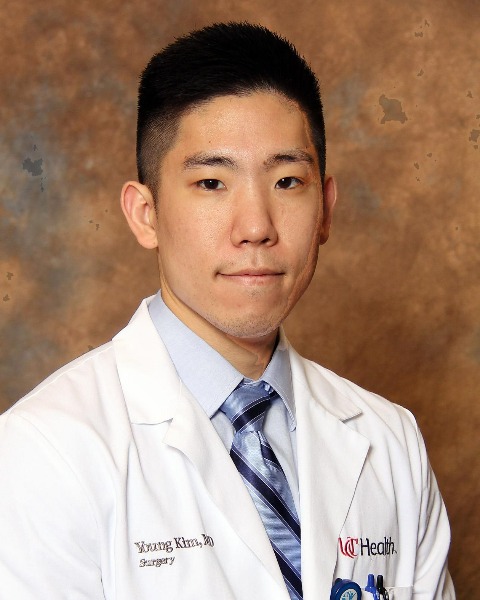SVS-VESS Scientific Session @ VAM: Session 1b
VESS09 - National Impact of Virtual Residency Interview Format on the Integrated Vascular Surgery Match
Wednesday, June 4, 2025
2:36 PM - 2:41 PM CT
Location: Morial CC, Second Floor, Room 228-230

Christina L. Cui, MD, MS
christina.cui@duke.edu
Duham, North Carolina- DJ
- HS

Young Kim, MD, MS (he/him/his)
Assistant Professor of Surgery
Duke University Medical Center
Cary, North Carolina
Submitting & Presenting Author(s)
Co-Author(s)
Senior Author(s)
Objectives: Travel restrictions due to the coronavirus disease 2019 pandemic triggered a transition from face-to-face to virtual recruitment. Survey based studies of applicants to vascular surgery (VS) residencies suggest that this change was preferred, as applicants report sufficient interactions with the program at a significantly lower cost and time burden. It is unclear, however, how this paradigm shift has affected objective outcomes from the Match. The purpose of this study is to investigate the impact of virtual recruitment on Match outcomes for vascular surgery residencies.
Methods: Residency application and match-related data were collected from National Resident Matching Program (NRMP) Main Residency Match reports. In-person interview cycles (2010-2019) were compared with virtual interview cycles (2020-2024). Metrics of VS specialty popularity included total applicants per position and position fill rate. Metrics of VS competitiveness included overall match rate, first-choice match rate, and proportion of unmatched applicants.
Results: The total number of VS programs (68.8±7.9 vs 42.3±11.2), positions (86.2±10.2 vs 48.8±14.3), and applicants (164.8±10.6 vs 96.3±18.3) were significantly higher during the virtual interview cycles (p < 0.001 each). Similar increases were noted in total ACGME-accredited programs, positions, and applicants (p < 0.001 each).
Measures of VS specialty popularity, including applicants per position (1.9±0.3 vs 2.1±0.5, p=0.54) and position fill rate (99.1±1.1% vs 97.2±2.9%, p=0.20), remained unchanged when comparing in-person and virtual interview cycles. In comparison, the proportion of applicants per position (1.8±0.0 vs 1.9±0.1) and position fill rate (93.9±0.8% vs 95.9±0.5%) across all ACGME-accredited programs were both significantly lower during the virtual interview years (p < 0.001 each). (Figure 1,2)
Three metrics for specialty competitiveness were also examined. For VS residency programs, overall match rate (52.0±7.1% vs 48.7±10.2%, p=0.53) and percentage of unmatched applicants (48.0±7.1% vs 51.3±10.2%, p=0.53) remained unchanged, whereas the proportion of applicants matching at their first choice (41.5±2.9% vs 59.2±13.5%, p=0.01) was lower during the virtual interview cycles. In comparison, overall match rate was greater (53.2±0.8% vs 49.3±2.1%) and the proportion of unmatched applicants were lower (46.8±0.8% vs 50.7±2.1%, p=0.001) across all ACGME-accredited programs during the virtual interview years.
Conclusions: The study period of virtual recruitment saw no change in VS popularity, suggesting that this approach does not detract applicants. However, VS did become a more competitive residency, with fewer applicants matching at their first choice. Potential hybrid approaches, such as the protocol described within the VISIT trial, may offer viable alternatives that capitalize on the strengths of both virtual recruitment and face to face engagement.
Methods: Residency application and match-related data were collected from National Resident Matching Program (NRMP) Main Residency Match reports. In-person interview cycles (2010-2019) were compared with virtual interview cycles (2020-2024). Metrics of VS specialty popularity included total applicants per position and position fill rate. Metrics of VS competitiveness included overall match rate, first-choice match rate, and proportion of unmatched applicants.
Results: The total number of VS programs (68.8±7.9 vs 42.3±11.2), positions (86.2±10.2 vs 48.8±14.3), and applicants (164.8±10.6 vs 96.3±18.3) were significantly higher during the virtual interview cycles (p < 0.001 each). Similar increases were noted in total ACGME-accredited programs, positions, and applicants (p < 0.001 each).
Measures of VS specialty popularity, including applicants per position (1.9±0.3 vs 2.1±0.5, p=0.54) and position fill rate (99.1±1.1% vs 97.2±2.9%, p=0.20), remained unchanged when comparing in-person and virtual interview cycles. In comparison, the proportion of applicants per position (1.8±0.0 vs 1.9±0.1) and position fill rate (93.9±0.8% vs 95.9±0.5%) across all ACGME-accredited programs were both significantly lower during the virtual interview years (p < 0.001 each). (Figure 1,2)
Three metrics for specialty competitiveness were also examined. For VS residency programs, overall match rate (52.0±7.1% vs 48.7±10.2%, p=0.53) and percentage of unmatched applicants (48.0±7.1% vs 51.3±10.2%, p=0.53) remained unchanged, whereas the proportion of applicants matching at their first choice (41.5±2.9% vs 59.2±13.5%, p=0.01) was lower during the virtual interview cycles. In comparison, overall match rate was greater (53.2±0.8% vs 49.3±2.1%) and the proportion of unmatched applicants were lower (46.8±0.8% vs 50.7±2.1%, p=0.001) across all ACGME-accredited programs during the virtual interview years.
Conclusions: The study period of virtual recruitment saw no change in VS popularity, suggesting that this approach does not detract applicants. However, VS did become a more competitive residency, with fewer applicants matching at their first choice. Potential hybrid approaches, such as the protocol described within the VISIT trial, may offer viable alternatives that capitalize on the strengths of both virtual recruitment and face to face engagement.
